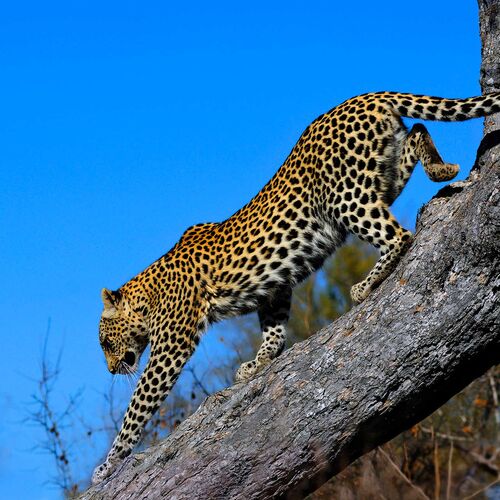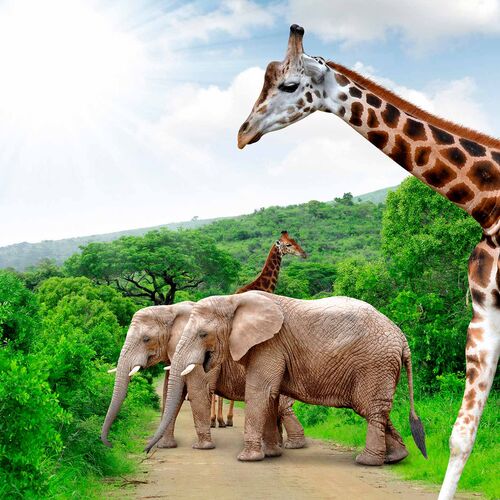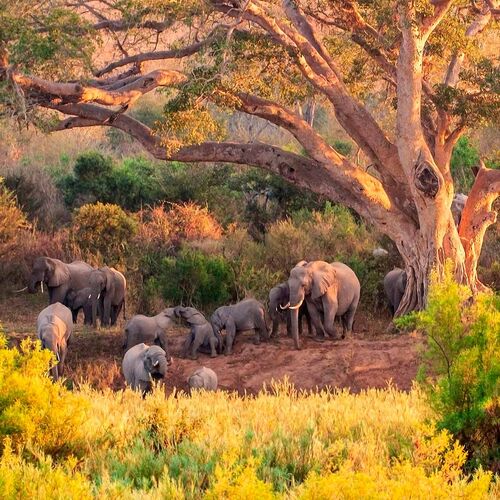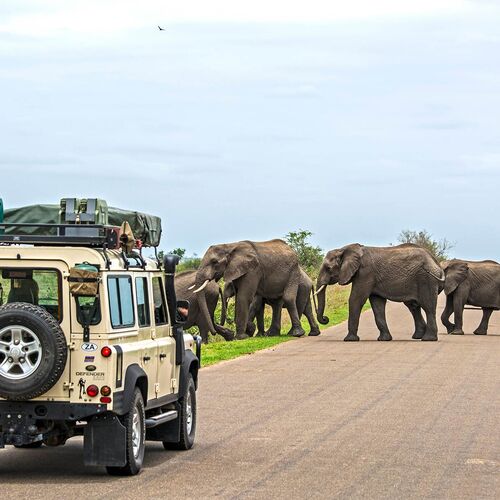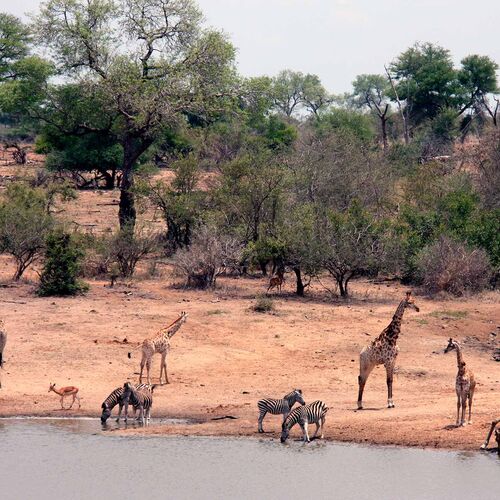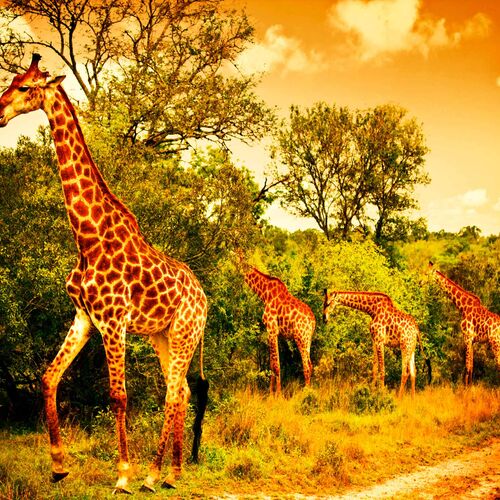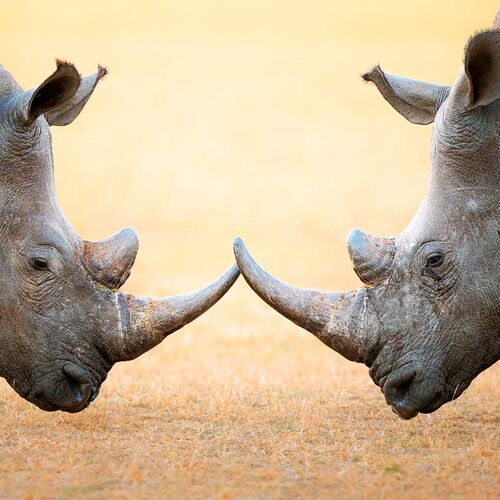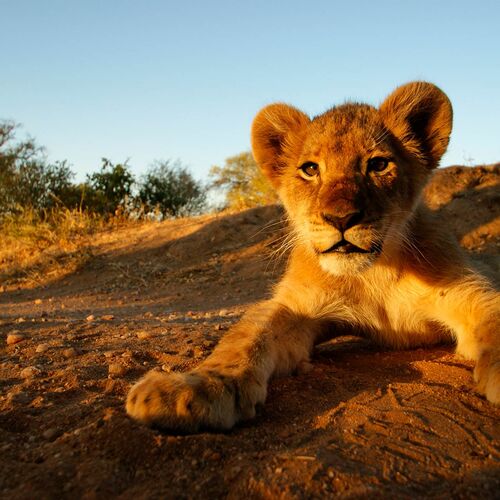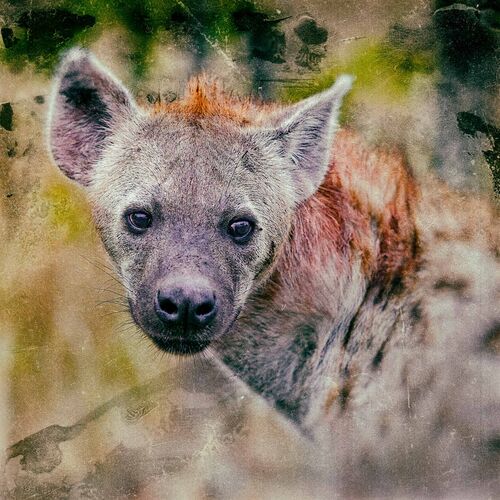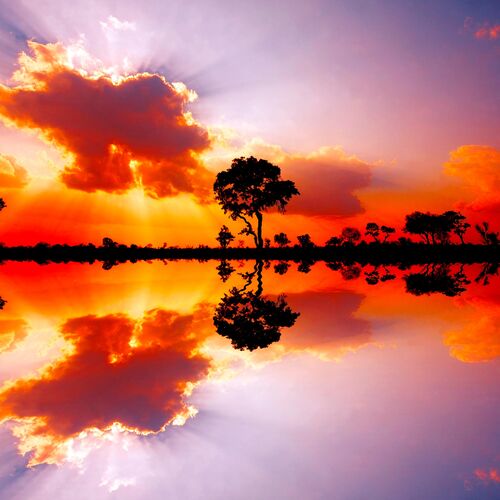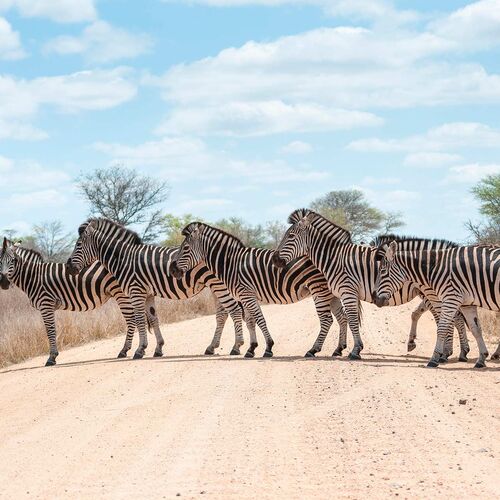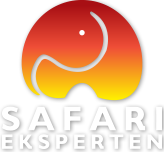Kruger National Park
Kruger National Park is the largest in South Africa and nearly 20,000 km2 in size. On top of this comes the large private reserves on the western side of the park. Kruger is also one of the oldest national parts in the world, with a history of more than 100 years to look back on. This means the animals have long lived peacefully here and are not shy. Like all parks and reserves in South Africa the Kruger is fenced, but the fences have been taken down along a stretch of circa 100 km where it shares a border with the majority of the private reserves, which together with a few private concessions in Kruger itself provide safaris of the very highest standard.
The vegetation here predominantly consists of savannah woodland, which is most lush to the south and driest in the north, where the huge, ancient baobab trees have their most southernly outpost on the continent. In amongst the areas of forest and bush you can find open areas of grassland with a number of rivers and waterholes. Kruger is home to the largest populations of animals in South Africa, and here you can also find more species of mammals and birds than in any other park. The classic “Big Five”, elephant, rhinoceros, buffalo, lion and leopard, are all common in Kruger. The park is particularly important for rhinoceros, in fact the most important on the continent, as here you can find more white rhino than in the rest of Africa, and nearly half of South Africa’s black rhinoceroses live here. Kruger also has fine populations of giraffe, zebra, wildebeests as well as many antelope species such as the greater kudu, eland, roan and sable antelopes, and here you can find more than 100,000 impalas. Baboons and meerkats are also very numerous, while the rivers are home to many crocodile and hippopotamus. The African wild dog is relatively common, and here you can also see cheetah.
Kruger is home to a rich and varied avifauna with many interesting birds such as storks, ostriches, secretary birds, numerous birds of prey and hornbills. The dry winter months from May to October are the best time to see big game. At this time the vegetation is at its least dense, and the animals are concentrated around the scarce water sources. The wetter summer months can show the park at its most lush, and is the best time for seeing birds and animal young.
The range of activities available west of the park and its associated private reserves is almost endless. Here you can, to give a few examples, find fantastic golf courses, fly in a balloon, and visit the magnificent Blyde River Canyon nearby. In the park and reserves themselves, the focus is naturally on highly professional guided safaris in open vehicles, both during the day, and in the dark using large flood-lamps. A number of places also offer the opportunity of taking part on a walking safari.
Highlights:
• Many unafraid animals in South Africa’s absolut biggest and most varied park
• The famous ”Big Five”, elephant, rhinoceros, buffalo, lion and leopard are often seen
• An almost overwhelming range of top quality camps offering highly professionel guiding
High Season: May to October
These attractions can be seen on the following tours





